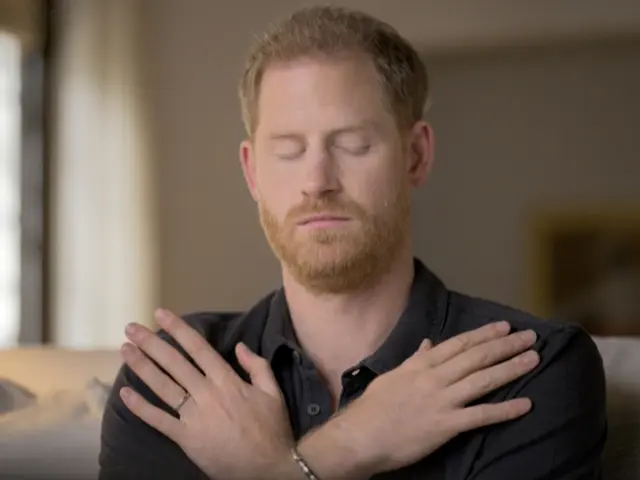‘The transformation was life-saving’: How EMDR therapy changed one woman’s life after the death of her mother

- Oops!Something went wrong.Please try again later.
On 11 September 2013, two policemen showed up at Louise Graham’s front door. Her mother, last seen in Spain, had been missing for several days. “I was expecting Interpol to interview me for a missing person’s report,” she recalls. Graham had a complicated relationship with her mother and, three months previously, made the decision to temporarily cut her out of her life. She had been due to fly home that week; Graham was planning to attempt a reconciliation.
“I saw [their] faces and immediately knew what they were there to tell me,” Graham says. “I shut the door on them and ran to the other side of my house. I didn’t want to hear the news.” After breaking into her home, the police informed Graham that her mother had died of a heart attack three days earlier. “It was my biggest fear realised,” she says.
It wasn’t until four years later that Graham, now 36, would discover Eye Movement Desensitization and Reprocessing (EMDR), a form of therapy that would be the key to her recovery from the trauma of that day. EMDR has been in the news a lot recently. Last week, Prince Harry revealed he had been undergoing the relatively new therapy in his new series The Me You Can’t See, as a way of helping him come to terms with the sudden death of his mother, Princess Diana, who was killed in a car accident in August 1997.
Speaking to Oprah Winfrey in the third episode of the series, Prince Harry explains how EMDR was “always” something he had wanted to try. He reveals how being urged to walk behind his mother’s coffin as part of her funeral procession to Westminster Abbey at the age of 12 turned London into a traumatising place. “London is a trigger, unfortunately. Because of what happened to my mum, and because of what I experienced and what I saw,” he tells EMDR therapist Sonja Oakley.
EMDR is a form of psychotherapy treatment that was originally designed by Francine Shapiro in 1989 as a way of alleviating the distress clients associate with traumatic memories. It differs from traditional talking therapies, such as cognitive behavioural treatment (CBT), because in addition to answering specific questions, it requires the client to recall their full sensory experience, from the emotions they felt to any smells they might’ve noticed.
“It’s about revisiting what comes up in the body when the client is recalling a particular moment and once that has been activated, we’re kicking the brain’s digestive process into action to enable the client to re-process their trauma so that it is not as emotionally vivid. We are essentially rewiring the neural network,” explains psychotherapist and EMDR specialist Claire van den Bosch, who runs the A Time To Heal clinic.

EMDR is often recommended to people who have experienced a singular incident of trauma. This can trigger something known as “single onset PTSD”, van den Bosch says. “In these cases, it can take eight to 12 sessions in order to see an impact”. Though, as was the case for Graham, many clients who seek EMDR with single-onset PTSD often end up also uncovering earlier traumas, thus resulting in them undergoing treatment for much longer periods of time.
“After my mother died, I fell into clinical depression and experienced a complete loss of identity,” says Graham. Soon, other issues began to come out of the woodwork. “I had suicidal thoughts and completely disconnected from myself. The memory of seeing the police officers became attached to all sorts of other issues I’d experienced in my childhood, from anxiety to abandonment. I was carrying around a lot of shame in my body, too.”
The memory of seeing the police officers became attached to all sorts of other issues I’d experienced in my childhood, from anxiety to abandonment
Louise Graham
Graham initially sought out talking therapy alongside more alternative treatments, like the seven-day Hoffman Method founded by American entrepreneur Bob Hoffman. It worked, but after a severe panic attack on day three of the retreat, Graham realised she needed to dive deeper into her past. “That’s when my therapist suggested I try EMDR,” she says.
EMDR works thanks to a process known as bilateral stimulation, which generates the left and right stimulus in the brain to move back and forth. It can be conducted in several ways. The most popular is via the eyes, with the therapist asking the client to track their hand as they move it back and forth across their field of vision. It can, however, also be carried out using handheld buzzers, by tapping the knees, or through the butterfly tap method, which is what both Prince Harry and Graham have done. “What Prince Harry does is exactly how my treatment works,” she says.
While it remains unclear exactly how EMDR works on a clinical level there is plenty of evidence to support its efficacy - the NHS says “it’s not clear exactly how EMDR works, but it may help you change the negative way you think about a traumatic experience”. There are two primary explanations used by psychotherapists. The first is that, by thinking about your trauma while doing something else (such as moving your eyes from one side to the other) “you’re taxing your working memory in a way that forces the memory to dissolve”, says van den Bosch. “The idea is that you can’t hold it in the mind in the same way while doing something else, so the memory starts to disintegrate,” she adds.
The second explanation (and the one van den Bosch shares) is connected to sleep, specifically REM sleep, a type of deep sleep during which your eyes move rapidly in a range of directions. “When we dream, we’re processing information from the day and filling it away in our mind,” says van den Bosch. “But when something traumatic happens to us, the brain’s normal filling process becomes overwhelmed, so it doesn’t work as well.” EMDR triggers it to work again. “The thinking is that if digesting information – like we do in REM sleep – causes the eyes to move back and forth, then by moving the eyes back and forth, we prompt the brain to digest information.”
When something traumatic happens to us, the brain’s normal filling process becomes overwhelmed, so it doesn’t work as well. Hence why the trauma can have a lasting psychological impact
Claire van den Bosch
After four years of EMDR, Graham reflects on that day in September 2013 very differently. “When I talk about it now, it sort of feels like I’m watching an episode of This Is Us,” she says. “Like, it’s a sad event, but it doesn’t have any personal meaning anymore. It doesn’t have any charge or narrative around it that impacts my mental health or how I think about my self-worth. It’s just there.”
But just because a client’s most traumatic memories have been processed, that does not mean their experience with EMDR has come to an end. Graham is still doing it on a regular basis; though the way she uses it now is very different. “We use it to tap into the positive experiences in my life, which I really love,” she says. “So if I come to a session and I share something I’m excited about, we will use EMDR to tap into that as a way of reinforcing it and making it stronger.” This way of using EMDR is important when it comes to boosting a client’s overall psychological wellbeing in the long-run, says van den Bosch. “It’s not enough to just talk about what’s negative, we also have to balance clients with positivity.”
The transformative effects of EMDR are such that van den Bosch believes everyone could benefit from it. “Whether we’ve been through a specific trauma or not, we all have some kind of overwhelming experience we haven’t processed properly.” Van den Bosch believes that failing to deal with these experiences can chip away at you and inform many aspects of your life without you even realising.
For Graham, who has launched her own business in social entrepreneurship since starting EMDR, the treatment has been life-changing. “I feel as if I’ve just been born again,” she says. “I am so much more psychologically robust than I was before and really understand how to look after myself and set boundaries.” The shame she was carrying around in her body has faded, too. “EMDR has opened up so many possibilities for me,” she adds. “I feel as if it has given me my life back.”
You can find out more about EMDR here.
If you are experiencing feelings of distress and isolation, or are struggling to cope, The Samaritans offers support; you can speak to someone for free over the phone, in confidence, on 116 123 (UK and ROI), email jo@samaritans.org, or visit the Samaritans website to find details of your nearest branch.
If you are based in the USA, and you or someone you know needs mental health assistance right now, call National Suicide Prevention Helpline on 1-800-273-TALK (8255). The Helpline is a free, confidential crisis hotline that is available to everyone 24 hours a day, seven days a week.
Read More
Eurovision singers arrive in style for the competition
Prince Harry used alcohol and drugs to ‘mask’ feelings after his mother’s death
Meghan and Harry: Celebrities who also live in Santa Barbara, from Oprah to Ellen

